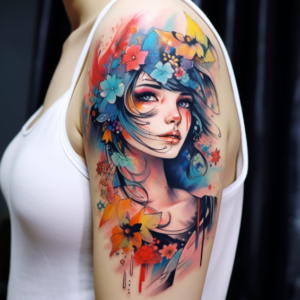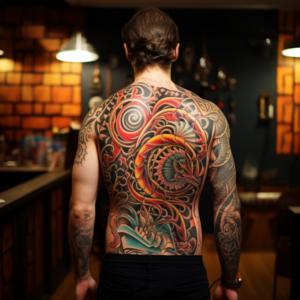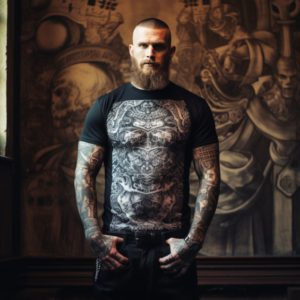In the realm of self-expression, tattoos have emerged as powerful visual narratives etched onto the canvas of the human body. “Empowering Ink” explores the profound ways in which tattoos transcend mere body art, becoming a medium through which individuals assert their identity, celebrate personal stories, and reclaim autonomy over their bodies. This exploration delves into the transformative journey of tattoos as a form of self-expression.
Section 1: Breaking Conventions:
Tattoos have long been associated with rebellion, but their contemporary resurgence signals a broader societal shift towards embracing individuality. This section delves into the historical context of tattoos as unconventional forms of self-expression and examines how contemporary tattoo culture challenges societal norms, allowing individuals to break free from conventional expectations.
Section 2: Identity and Individualism:
Tattoos serve as powerful markers of identity, allowing individuals to communicate their values, beliefs, and personal stories. This section explores the role of tattoos in shaping and expressing individualism, providing a canvas for wearers to outwardly manifest the intricacies of their inner selves. Personal anecdotes and interviews highlight the diverse ways in which individuals use tattoos to assert their unique identities.
Section 3: Healing and Resilience:
For many, tattoos are not just adornments; they are symbols of healing and resilience. This section delves into the therapeutic aspect of tattoos, examining how individuals use ink to reclaim control over their bodies, mark personal milestones, and overcome trauma. The stories of those who have found solace and strength in the process of getting tattooed shed light on the empowering nature of this art form.
Section 4: Body Positivity and Self-Love:
Tattoos play a pivotal role in promoting body positivity and self-love. This section explores how individuals use tattoos to embrace and celebrate their bodies, regardless of societal standards. Interviews with advocates for body positivity highlight the empowering impact of tattoos in challenging beauty norms and fostering a sense of self-acceptance.
Section 5: Social and Cultural Commentary:
Tattoos often serve as a form of social and cultural commentary, allowing individuals to express their views on issues ranging from politics to social justice. This section examines how tattoos become a visual language for wearers to communicate their stance on matters of personal and societal importance. Case studies illustrate the role of tattoos as instruments of activism and self-expression.
Section 6: Empowering Women Through Ink:
Tattoos have become a significant means through which women reclaim agency over their bodies and challenge traditional gender norms. This section explores the empowering role of tattoos in the feminist movement, showcasing how women use ink to assert autonomy, express strength, and defy societal expectations. Interviews with women who have embraced tattoos as symbols of empowerment provide valuable insights.
Section 7: Beyond Aesthetics: Impact on Mental Health:
The therapeutic benefits of tattoos extend beyond aesthetics, impacting mental health positively. This section explores the emotional and psychological dimensions of getting tattooed, examining how the process itself and the resulting artwork contribute to mental well-being. Interviews with mental health professionals and individuals share stories of how tattoos have played a role in personal healing journeys.
Conclusion:
“Empowering Ink” reveals the multifaceted nature of tattoos as a profound form of self-expression. As individuals use ink to tell their stories, assert their identities, and reclaim agency over their bodies, tattoos become more than mere embellishments—they emerge as empowering declarations of selfhood. In this evolving landscape of body art, tattoos stand as enduring symbols of resilience, individuality, and the limitless potential of human self-expression.



